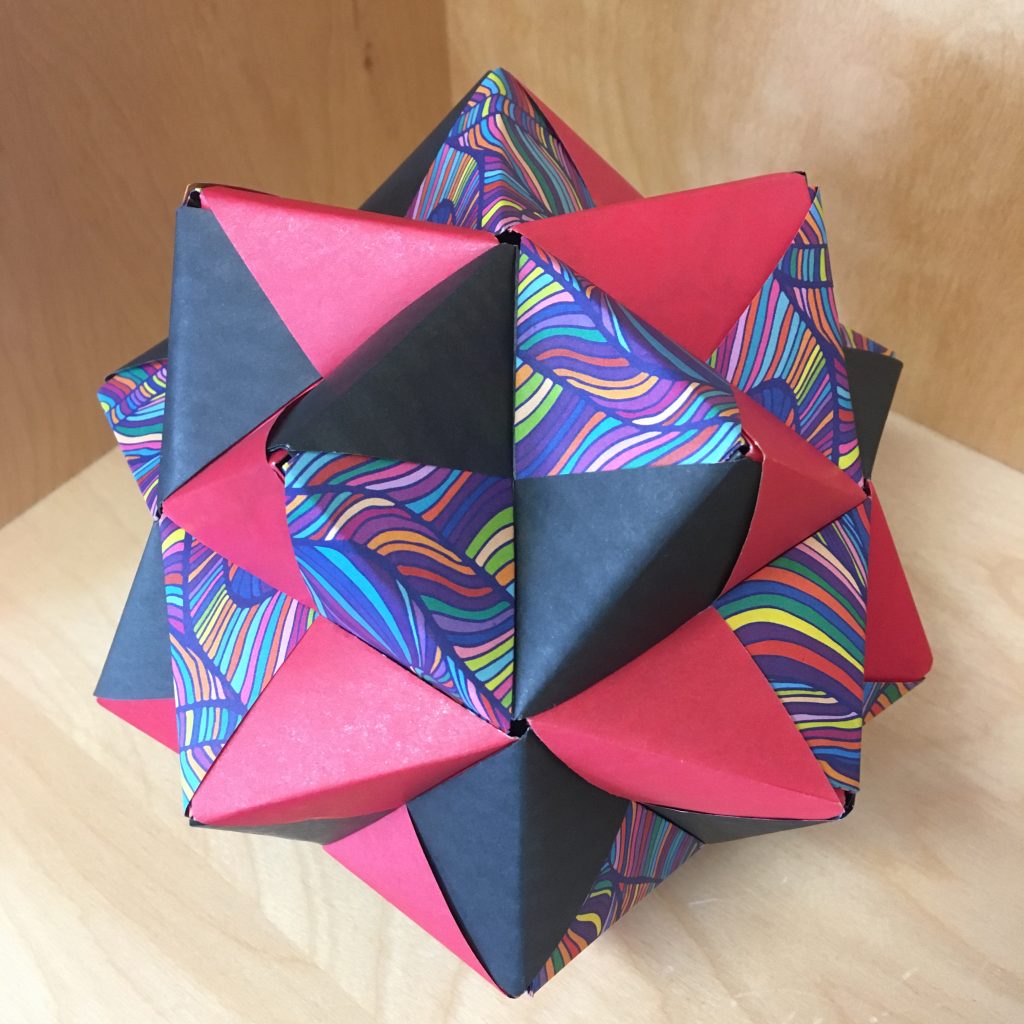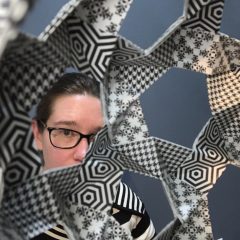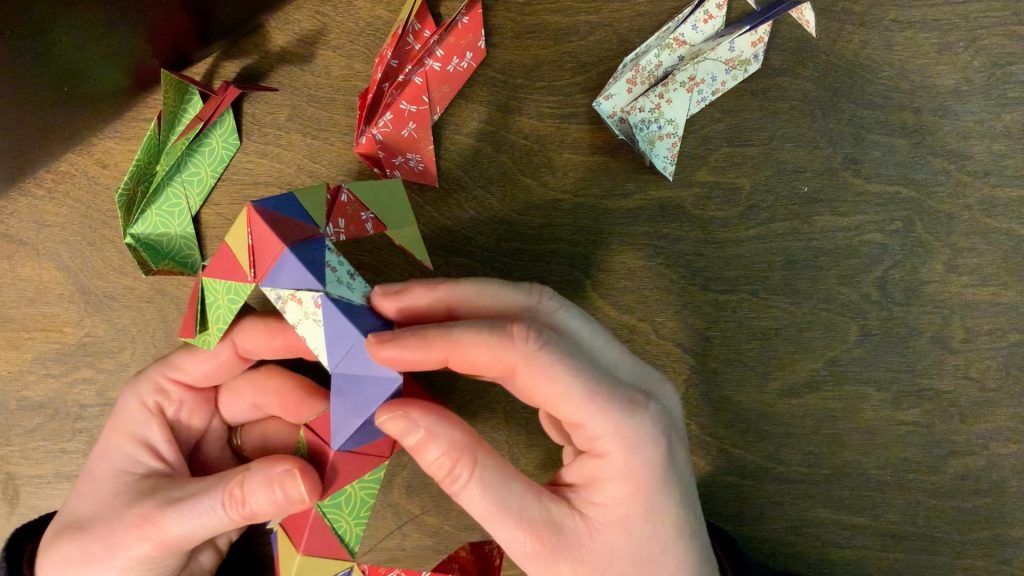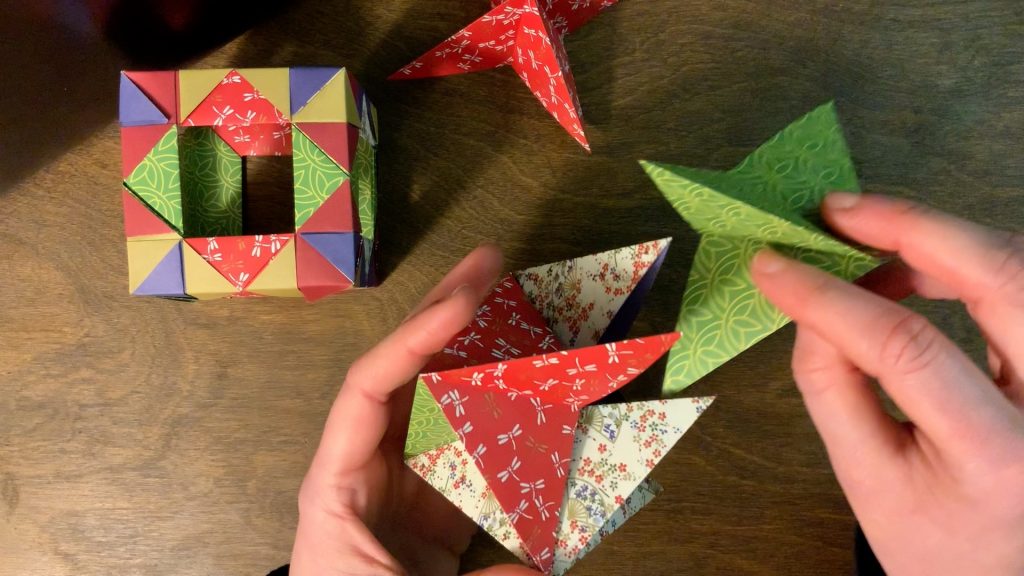Some of the Maths & Crafts students volunteered in February to help Trefor Bazett run an origami event as part of a day of math and engineering fun on campus (organized in partnership with Let’s Talk Science). Our event centred on Sonobe modules.
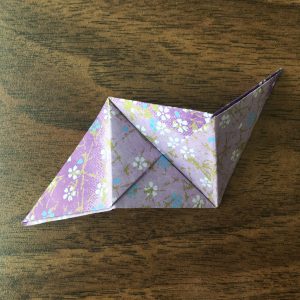
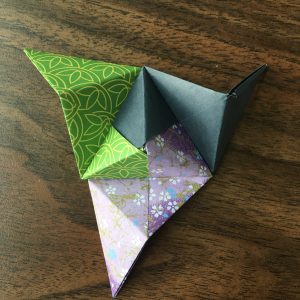
One you have folded some Sonobe units, a good starting model is to assemble them into a cube:
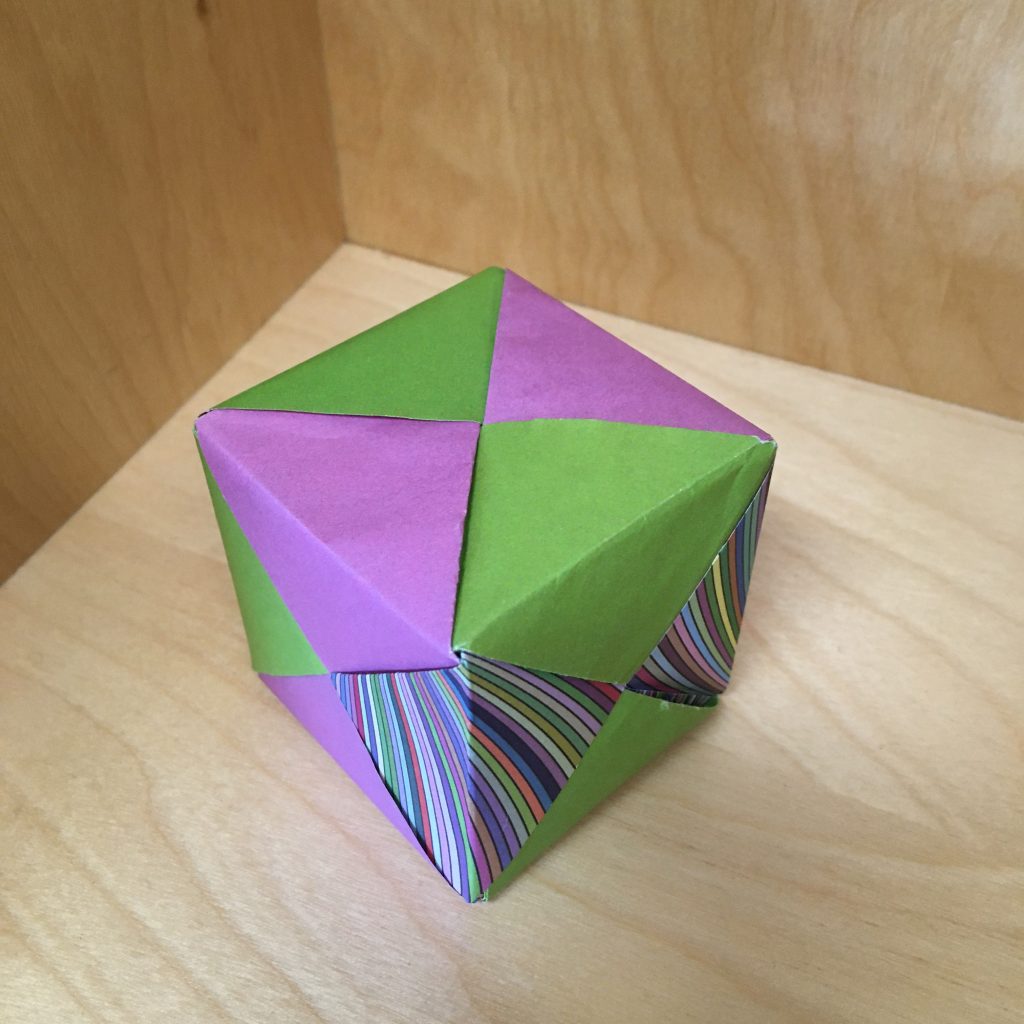
You can build other three-dimensional shapes with them too: a “triakis octahedron” or a “triakis icosahedron”. There are some examples of triakis octahedra in the Elliot building origami display, and there is an image of a triakis icosahedron at the end of this post.
Questions to ponder (some hints below):
- How many Sonobe units do you need to build a cube?
- If you wanted to “properly colour” your cube, how many colours would you need? Here we just mean that two papers of the same colour shouldn’t be attached to each other.
- Why is the cube special? The other models are “triakis” things; why isn’t the cube?
- How many pieces of paper would a triakis icosahedron need?
- How many colours to properly colour the triakis octahedron? triakis icosahedron? (Three are certainly needed, because the units are assembled in trios.)
Resources from Maths Crafts New Zealand
Hints and answers to my questions:
- A cub needs six Sonobe modules. There are at least two ways to count it! First way: each Sonobe module is going to end up with its square inner bit being the face of a cube. How many faces has a cube got? Second way: each triple of Sonobe modules is going to form the corner of a cube; how many corners is each module involved in, and how many corners has a cube got?
- You’ll need at least three colours for any of these models, because Sonobe units lock together in trios. For the cube, three colours suffice.
- The “cube” is actually a “triakis tetrahedron”, so it’s not as special as it seems! This might take some drawing to work out; you might find it helpful to imagine what is left over if you slice each vertex off of a cube.
- An icosahedron has 20 faces, each of which is replaced by a trio of Sonobe units, and each unit participates in two faces, so you need 30 pieces of paper.
- For the triakis octahedron and the triakis icosahedron, three colours suffice (the triakis icosahedron pictured below is properly three-coloured). It is harder to properly three-colour the triakis icosahedron, though!
